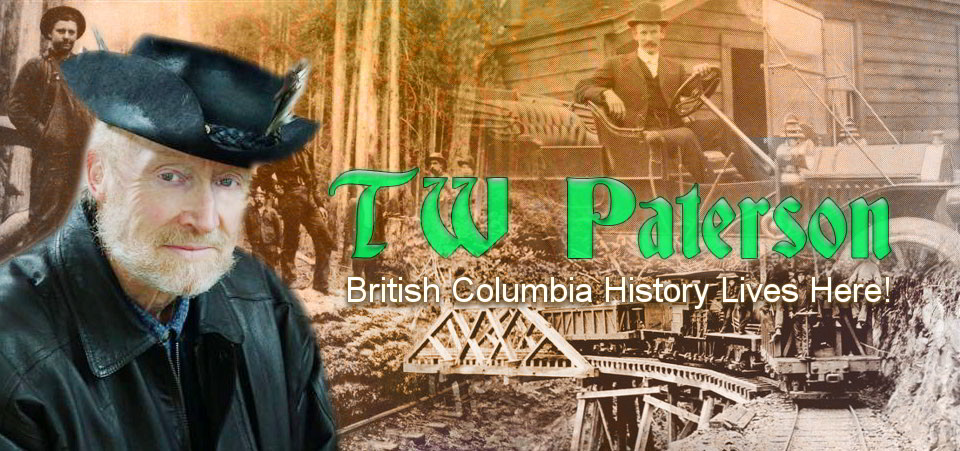VANCOUVER’S OWN TRUNK MURDER
Although it doesn’t rank with the infamous trunk murders of Brighton, New Orleans and Winnie Ruth Judd, Vancouver does have its own sort-of ‘trunk murder.’

–Courtesy www.pinterest.com
This bizarre case, which first broke the news with garish, glaring headlines in the July 12, 1969 Vancouver Sun—B.C. MURDER SUSPECT SEIZED WITH HOSTAGE; Buried Body Discovered—was described by an RCMP spokesman as one of “the most bizarre, unbelievable” cases ever recorded in B.C.
The story broke with the arrest of former mental patient John Melville Ritcey, 24, near Prince George. Sought in connection with the discovery of a badly decomposed body near Hope.
He was armed and had taken a 19-year-old Surrey man, Steve Thorlakson, hostage after commandeering his car (because he couldn’t drive) but surrendered without a struggle when pulled over on the John Hart Highway.
Investigators had already identified the body as that of a Vancouver man missing since May who they believed to have been murdered in Vancouver. Tipped to Ritcey’s possible involvement, and suspecting that he was fleeing to Alberta, an all-points-bulletin led to his arrest near MacLeod Lake, 70 miles north of Prince George.
Sgt. A.W. Wieshlow of the Dawson Creek RCMP Detachment later described it as a million-in-one-chance that he spotted Thorlakson’s car at a gas pump while driving to Prince George.
“I knew [Ritcey] was armed and dangerous and I feared for the hostage’s life. I drove past the service station a couple of times and then lost him. I radioed again for roadblocks to be set up further south and he was caught there.”
Thorlakson then told of having been held for two days with a gun at his throat but police, as yet, had said little as to how they connected the discovery of a body near Hope with Ritcey’s possible involvement.
Nude, and wrapped in a plastic bag (the trunk comes in later) the body had been found in a shallow grave just off a logging road. Subsequent examination would show that it had been sprinkled with lime to hasten decomposition.
Its very discovery was another strange angle to this strange case.
When informed by Vancouver police of a possible gravesite in their area, Hope RCMP turned to Conservation Officer Jack Delaire. He, Sgt. P.J. Humphries and Cst. Frank Michelsky “decided that if we were driving east from Hope and wanted to bury a body we would go up the first logging road, seven miles east of here.
“Frank and I went out looking. We turned up the road and passed the first crossroad without seeing anything unusual. I was looking for anything unnatural that would indicate someone had dragged something into the woods.
“We drove on about 200 yards and I noticed some leaves had turned brown where some branches had been broken over and left hanging.
“We were already past the place when I spotted it so I backed up and we went into the bush. About 100 feet in from the road we could distinguish a trail that had been left by something. There was moss rubbed off the top of a fir log just before we got to where the body was, and some saplings had been scarred by something.
“Just over the log I saw sand on the pine needles that covered the forest floor, so we dug down a couple of feet and found the body.”
Here’s where the trunk comes in.
An 18-year-old youth in Dawson Creek directed police to where it had been dumped about a mile from where the body was found. Having admitted to helping Ritcey bury a body a month earlier, he was held as a material witness. Inside the trunk was clothing believed to be that of the victim. All added up to a non-capital murder charge (besides robbery and kidnapping) for Ritcey and another headline, this one referring to the ‘trunk murder.’
By this time the body had been tentatively identified as that of a missing teenager, Kenneth Black. Killed on May 1st, his body had been kept in a trunk in a Vancouver apartment for two months before being transported—by trunk, of course—to the woods near Hope.
He’d been strangled and an attempt had been made at decapitation.
At the trial, the story became even more sensational when Leonard McGuire, 19, testified that he’d been held prisoner in fear of his life for two months in the apartment where Black, his friend, was strangled and mutilated after spurning Ritcey’s sexual advances.
He’d then been forced to help Ritcey and another youth dispose of the body before being released to return to Sudbury where police found him.
By this time the press were referring to Ritcey as the “accused body-in-the-trunk killer”.
He’d set a legal precedent, too, being the first accused to go to trial without a preliminary hearing thanks to a new Criminal Code amendment that allowed the Crown, with the accused’s consent, to proceed without evidence being taken and in the absence of the accused.
Ritcey changed his plea to guilty, offering as his defence that Black’s death had been in self-defence. Upon conviction and sentence of life imprisonment, his final words in the courtroom were to denounce the judicial system–”the just society of Pierre Elliot Trudeau [is] worthless, not worth the paper it is written on”—because the all-male jury had, he was sure, convicted him for being homosexual.
So much for Vancouver’s trunk murder.
It may not stack up against the classical bodies-in-a-trunk in Britain and the U.S. but it certainly does have some fascinating twists of its own.
See Also: Anger, Resentment, Rage Sparked Murders
(From Capital Crime, T.W. Paterson, FirGrove Publishing, 2021.)
